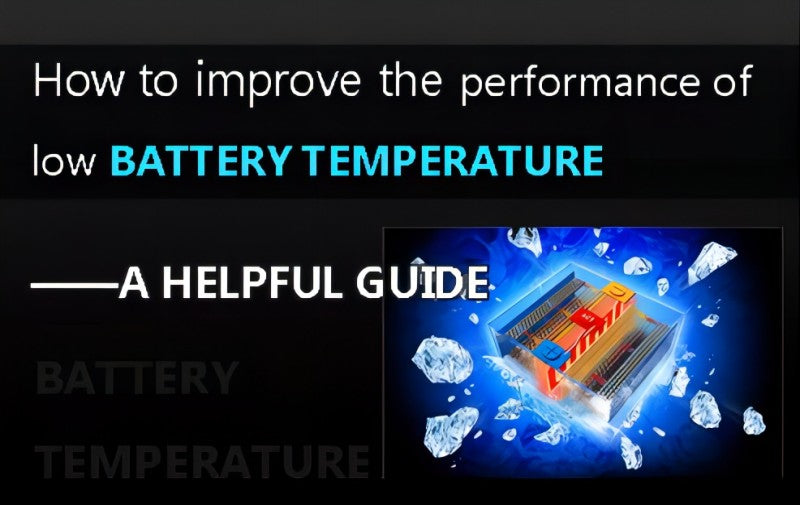
Main content:
- Cathode materials affect the manufacture of lithium battery
- Electrolyte in lithium battery
- Optimizing solvent composition
- New electrolyte salt and low battery temperature
- Additives have an effect on low temperature
- Proper anode materials
- Surface treatment
- Surface coating
- Increasing the spacing between graphite layers
- Controlling the particle size of negative electrode
- Conclusion
Ion batteries have been widely used in consumer electronics, electric vehicles, and energy storage due to their high specific energy and power density, long cycle life, and environmental friendliness. As the power source of new energy vehicles, we should pay attention to the problem of battery temperature. For example, the energy density is significantly reduced under low temperature conditions, and the cycle life is also affected accordingly.
This also severely limits the scale use of lithium-ion batteries. At present, the main factors causing the poor low-temperature performance of lithium-ion batteries are as follows:
- The viscosity of the electrolyte increases at low battery temperature and the conductivity decreases;
- Electrolyte/electrode interface membrane impedance and charge transfer impedance increase;
- The migration rate of lithium ions in the active material body is reduced. As a result, the polarization of the electrode is increased at low battery temperature, and the charge and discharge capacity is reduced.
In addition, during low battery temperature charging, especially when low battery temperature and high-rate charging, lithium metal will precipitate and deposit on the negative electrode, and the deposited metal lithium will easily react irreversibly with the electrolyte to consume a large amount of electrolyte.
At the same time it further increase the thickness of the SEI film, resulting in the battery impedance of the surface film of the negative electrode further increases, and the polarization of the battery increases again, which will greatly damage the battery temperature performance, battery life and safety performance of the battery.
Cathode materials affect the manufacture of lithium battery
Cathode material is one of the key materials for the manufacture of lithium-ion batteries, its performance directly affects the various indicators of the battery, and the structure of the material has an important impact on the battery temperature performance of lithium-ion batteries. Olivine-structured LiFePO4 has the advantages of high discharge specific capacity, stable discharge platform, stable structure, excellent cycle performance, and abundant raw materials.
It is the mainstream cathode material for lithium-ion power batteries. But lithium iron phosphate belongs to the Pnma space group, P occupies the tetrahedral position, the transition metal M occupies the octahedral position, Li atoms form a migration channel along the [010] axis one-dimensional direction, this one-dimensional ion channel leads to lithium ions only.

The orderly extraction or intercalation in a single way seriously affects the diffusion ability of lithium ions in the material. Especially at low battery temperature, the diffusion of lithium ions in the body is further hindered, resulting in increased impedance, resulting in more serious polarization and poor battery temperature performance. Lithium-rich manganese-based layered cathode materials have higher discharge specific capacity and are expected to become the next-generation cathode materials for lithium-ion batteries.
However, there are many problems in practical application of lithium-rich manganese-based: the first irreversible capacity is high, and it is easy to change from layered structure to spinel structure during charge and discharge, so that the diffusion channel of Li+ is blocked by the transition metal ions migrated, It causes serious capacity fading, and at the same time, its own ion and electronic conductivity are not good, resulting in poor rate performance and battery temperature performance.
The main ways to improve the ion diffusion performance of cathode materials at low battery temperature are:
- Use materials with excellent conductivity to coat the surface of the active material body to increase the conductivity of the positive electrode material interface, reduce the interface impedance, reduce side reactions between the positive electrode material and the electrolyte, and stabilize the material structure.
- Do bulk phase doping of the material body by Mn, Al, Cr, Mg, F and other elements, increase the layer spacing of the material to increase the diffusion rate of Li+ in the body, reduce the diffusion resistance of Li+, and improve the battery temperature performance of the battery.
- Reduce the material particle size and shorten the Li+ migration path. It should be pointed out that this method will increase the specific surface area of the material and thus increase the side reaction with the electrolyte.
Electrolyte in lithium battery
As an important part of lithium-ion batteries, the electrolyte not only determines the migration rate of Li+ in the liquid phase, but also participates in the formation of the SEI film, which plays a key role in the performance of the SEI film.
At low battery temperature, the viscosity of the electrolyte increases, the conductivity decreases, the impedance of the SEI film increases, and the compatibility with the positive and negative electrode materials deteriorates, which greatly deteriorates the energy density and cycle performance of the battery.
At present, there are two ways to improve battery temperature performance through electrolyte: 1. Improve the battery temperature conductivity of the electrolyte by optimizing the solvent composition and using new electrolyte salts; 2. Use new additives to improve the properties of the SEI film, making it conducive to Li+ conduction at low battery temperature.
Optimizing solvent composition
The battery temperature performance of the electrolyte is mainly determined by its battery temperature eutectic point. If the melting point is too high, the electrolyte is easy to crystallize and precipitate at low battery temperature, which seriously affects the conductivity of the electrolyte.
Ethylene carbonate (EC) is the main solvent component of the electrolyte, but its melting point is 36°C, and its solubility in the electrolyte decreases or even precipitates at low battery temperature, which has a great impact on the low-temperature performance of the battery.
By adding components with low melting point and low viscosity and reducing the EC content of the solvent, the viscosity and eutectic point of the electrolyte at low battery temperature can be effectively reduced, and the conductivity of the electrolyte can be improved.
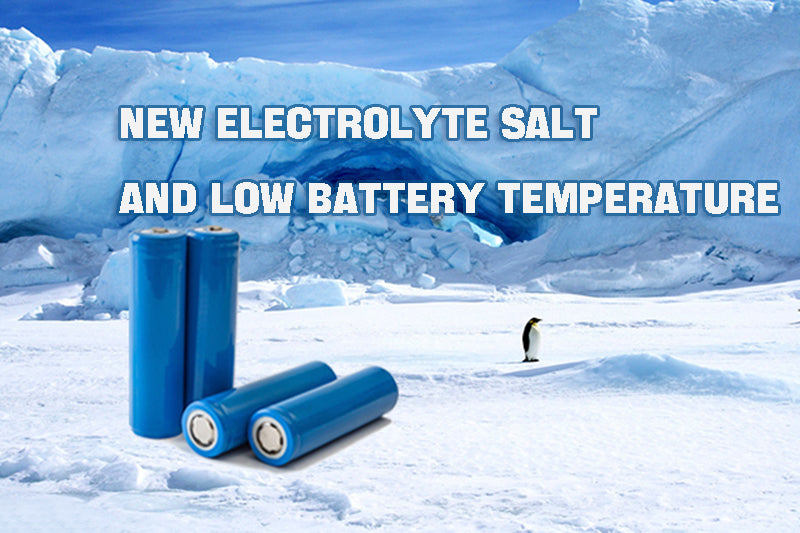
New electrolyte salt and low battery temperature
Electrolyte salt is one of the important components of the electrolyte and a key factor for obtaining excellent battery temperature performance. At present, the commercial electrolyte salt is lithium hexafluorophosphate, which forms an SEI film with high resistance, resulting in poor battery temperature performance. The development of new lithium salts is imminent.
Lithium tetrafluoroborate has a small anion radius, is easy to associate, and has a lower conductivity than LiPF6, but the charge transfer resistance at low battery temperatures is small, and it has good battery temperature performance as an electrolyte salt.
As a new type of lithium salt, LiTFSI has high thermal stability, low association degree of anion and cation, and high solubility and dissociation degree in carbonate system. At low battery temperature, the high conductivity and low charge transfer resistance of the LiFSI system electrolyte ensure its battery temperature performance. Mandal et al. used LiTFSI as the lithium salt, EC/DMC/EMC/PC (mass ratio 15:37:38:10) as the base solvent, and the resulting electrolyte still had a high conductivity of 2mS cm-1 at -40°C .
Additives have an effect on low temperature
The SEI film has a very important impact on the low battery temperature performance of the battery. It is an ion conductor and an electronic insulator, and it is a channel for Li+ to reach the electrode surface from the liquid phase. At low battery temperature, the resistance of the SEI film increases, and the diffusion rate of Li+ in the SEI film decreases sharply, which deepens the charge accumulation on the surface of the electrode, resulting in a decrease in the lithium intercalation ability of graphite and an increase in polarization.
By optimizing the composition and film-forming conditions of the SEI film, improving the ionic conductivity of the SEI film at low battery temperature is beneficial to the improvement of the low battery temperature performance. Therefore, the development of film-forming additives with excellent battery temperature performance is a current research hotspot. The conductivity and film resistance of the electrolyte have an important impact on the battery temperature performance of lithium-ion batteries.
For the battery temperature electrolyte, it should be optimized comprehensively from three aspects: electrolyte solvent system, lithium salt and additives. For the electrolyte solvent, a solvent system with low melting point, low viscosity and high dielectric constant should be selected. Linear carboxylate solvents have excellent low-temperature performance, but they have a great impact on cycle performance, and it is necessary to match cyclic carbonic acid with high dielectric constant.
Esters such as EC and PC are used in blends; for lithium salts and additives, the main consideration is to reduce the film-forming impedance and increase the migration rate of lithium ions. In addition, appropriately increasing the concentration of lithium salts at low temperatures can increase the conductivity of the electrolyte and improve performance.
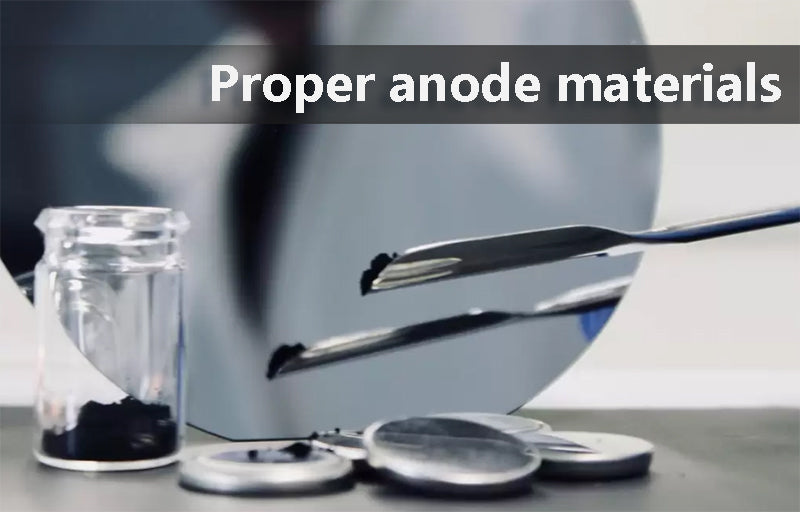
Proper anode materials
The poor diffusion kinetics of lithium ions in carbon anode materials is the main reason for limiting the battery temperature performance of lithium-ion batteries. Therefore, the electrochemical polarization of the anode is significantly intensified during charging lithium battery, which easily leads to the precipitation of metal lithium on the surface of the anode.
Selecting a suitable negative electrode material is the key factor to improve the battery temperature performance of the battery. At present, the battery temperature performance is mainly optimized through negative electrode surface treatment, surface coating, doping to increase interlayer spacing, and particle size control.
Surface treatment
Surface treatments include surface oxidation and fluorination. Surface treatment can reduce the active sites on the graphite surface, reduce the irreversible capacity loss, and generate more micro-nano structured pores, which is beneficial to Li+ transmission and reduces impedance.Surface coating
Surface coatings such as carbon coating and metal coating can not only avoid the direct contact between the negative electrode and the electrolyte, improve the compatibility between the electrolyte and the negative electrode, but also increase the conductivity of graphite and provide more lithium insertion sites.
The irreversible capacity is reduced. In addition, the layer spacing of soft carbon or hard carbon materials is larger than that of graphite, and coating a layer of soft carbon or hard carbon materials on the negative electrode is conducive to the diffusion of lithium ions, reducing the resistance of the SEI film, thereby improving the battery temperature performance of the battery. The conductivity of the anode material is improved by the surface coating of a small amount of Ag, which makes it have excellent electrochemical performance at battery temperature.
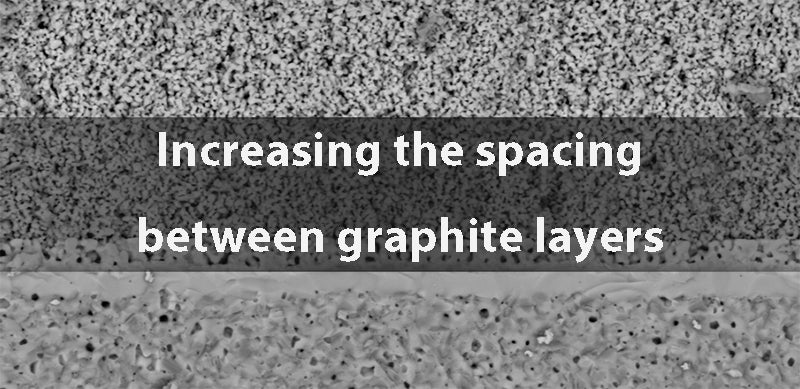
Increasing the spacing between graphite layers
The layer spacing of graphite negative electrode is small, and the diffusion rate of lithium ions between graphite layers decreases at low battery temperature, resulting in increased polarization. The introduction of B, N, S, K and other elements in the graphite preparation process can modify the structure of graphite.
The interlayer spacing of graphite can improve its ability to remove/intercalate lithium. The atomic radius of P (0.106pm) is larger than that of C (0.077pm). Doping P can increase the interlayer spacing of graphite and enhance the diffusion ability of lithium ions.
At the same time, it may improve The content of graphite crystallites in carbon materials. The introduction of K into the carbon material will form the intercalation compound KC8, and the interlayer spacing of the carbon material will increase when the potassium is extracted, which is conducive to the rapid insertion of lithium, thereby improving the battery temperature performance.
Controlling the particle size of negative electrode
The larger the negative electrode particle size, the longer the lithium ion diffusion path and the greater the diffusion resistance, resulting in increased concentration polarization and poor battery temperature performance. Therefore, appropriately reducing the particle size of the negative electrode material can effectively shorten the migration distance of lithium ions between graphite layers, reduce the diffusion resistance, increase the lithium ion battery electrolyte wetting area, and improve the low battery temperature performance.
In addition, the graphite negative electrode granulated by single particles with small particle size has high isotropy, can provide more lithium intercalation sites, reduce polarization, and can also significantly improve the low battery temperature performance.
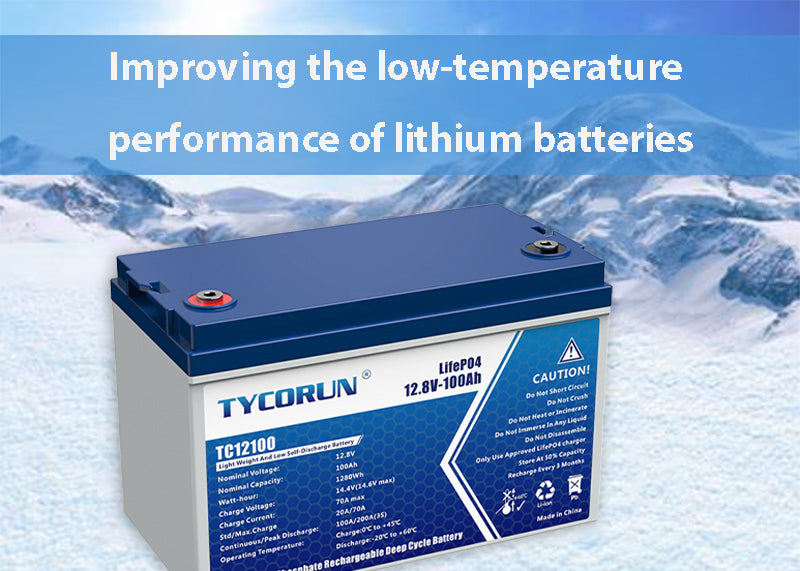
Conclusion
To improve the battery temperature performance, the influence of comprehensive factors such as the positive electrode, negative electrode, and electrolyte in the battery should be considered comprehensively, and the conductivity of the electrolyte should be improved by optimizing the composition of the electrolyte solvent, additives, and lithium salts, while reducing the film-forming impedance.
Electrode materials are modified by doping, coating, and small granulation to optimize the material structure and reduce the interface resistance and Li+ diffusion resistance in the active material body. Through the overall optimization of the battery system, the polarization of the lithium battery at low battery temperature is reduced, and the battery temperature performance is further improved.
Related article: top 5 battery electrolyte companies, how to save battery, long lasting battery
















